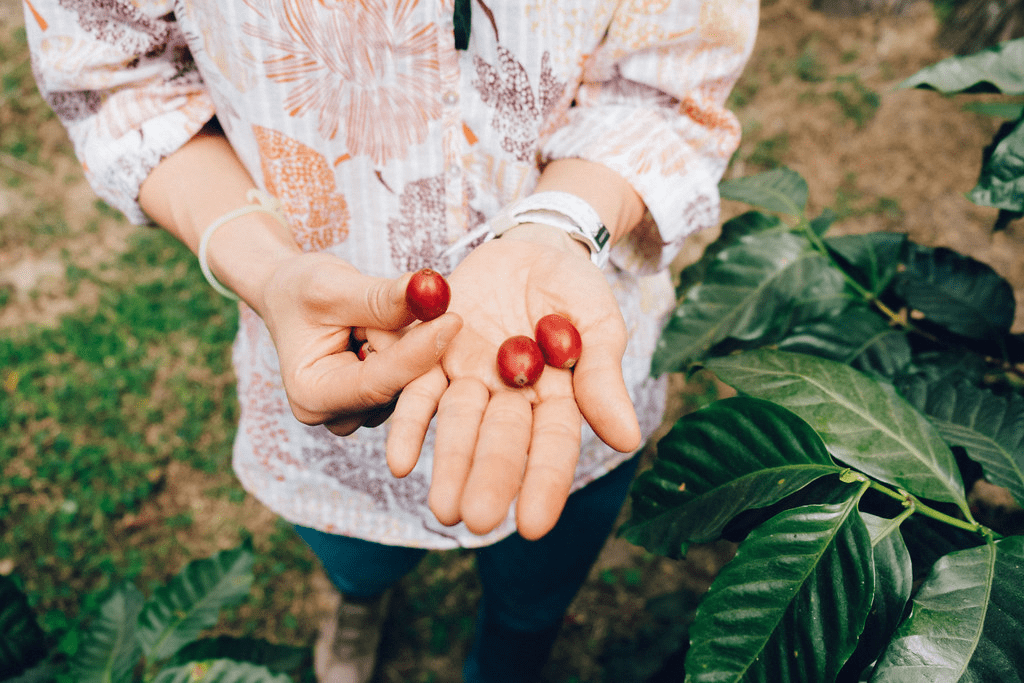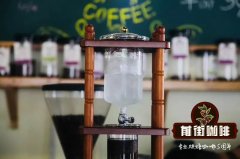Colombia Las Cochas Las Cadges Farm introduces Colombian Coffee varieties

Professional coffee knowledge exchange more coffee bean information please follow the coffee workshop (Wechat official account cafe_style)
Colombia is the world's second largest exporter of coffee, mainly produces Arabica coffee, and mainly water washing treatment, excellent flavor quality, balanced, located in the northwest corner of South America, is a seaport in the Pacific and Atlantic Ocean, from south to north by the Andes Mountains, with a diverse ecological environment, 1200-2000 meters above sea level. Due to the latitude span, there are two harvest seasons in a year, the main season is from October to January and the secondary season is from April to July. The commercial bean producing areas MAM are Madeleine Medillin (Antioquia), Armenia Armenia and Manisales Manizales (Caldas) in the Andas Mountains on the right. Boutique bean producing areas are mainly located in the south of Colombia for Coca Cauca, Vera Huila, Dorima Tolima and Nalinglong NARI ñ o. Colombian coffee is graded by particle size, Supremo is the highest above 17 mesh, followed by Excelso 16 ~ 14 mesh.
Colombia is currently the third largest coffee producer in the world, originally second only to Brazil, but in recent years Vietnamese coffee, which specializes in the production of Robusta stout beans, has surpassed Colombia's runner-up status. Colombia first planted so-called commercial beans in the mid-1830s, and coffee beans accounted for the largest share of export crops in the 20th century.
The local mountainous terrain, coupled with a variety of tropical microclimate, provides an ideal coffee growing environment. The national planting area is about 875000 hectares. The main varieties include Kaddura Caturra, Colombia Colombia, Tibika Tipica, bourbon Bourbon, elephant bean Maragogype, and Tabi. National farms and cooperatives, big or small, are run by more than 500000 farmers. It is distributed in 590 municipalities and 14 major coffee producing areas throughout the country-including Nari ñ o, Cauca, Meta, Huila, Tolima, Quindio, Caldas, Risaralda, Antioquia, Valle, Cundinamarca, Boyac á, Santander and Norte de Santander, respectively.
A total of 2 million Colombians depend on coffee cultivation for their livelihood, contributing 12.5 per cent to the gross domestic product of local agriculture, while 75 per cent of coffee bean production is sold abroad, making it the main source of Colombia's foreign exchange earnings.
Traditionally ripe coffee cherries are treated with water, although Colombia's Coffee Research Center has developed a system to protect the ecological environment in the past 15 years, which requires little water and can reduce local water pollution by 90%. And reduce water consumption by 95%, this drying method can not only effectively maintain the ecology, but also ensure stable coffee quality. This drying method is unique in Colombia, where farmers on small farms sprinkle shell beans on the flat roofs of their homes to dry in the sun, or use plastic sheds in colder climates at higher elevations. Colombia is so rich in climate temperature diversity that coffee can be grown and produced almost all year round. The main harvest time is from October of each year to February of the following year, and November and December are harvest periods. The second harvest period is relatively late, which varies according to the microclimate of each producing area.
The owner of the farm, 64 years old, was born in Samaniego city, Shamanigo, Nalingo Nari ñ o. The farm is run by his wife and children. As it is a family farm, Mr. Melo works very hard to make progress, hoping to give his children and grandchildren a good education and teach them the skills they depend on to continuously improve the family's living conditions.
Las Cochas Las Kajes Farm, 12 kilometers from Samaniego city in Shamanigo, is protected by local plants and is a traditional farm where coffee beans are treated with traditional equipment and dried in the natural sun. Farm owners are very active in community-organized activities, actively participate in seminars on social care or coffee-related skills, and spare no effort to protect the local forest and environment.
Aroma aroma / flavor flavor: honey, chocolate, citrus, melon, caramel, plum, raisin
Acid: lemon, tartaric acid, grapefruit
The complexity of complex is similar to that of other: the palate is supple, creamy and mellow, and the finish is long-lasting, sweet and cool.
END
Important Notice :
前街咖啡 FrontStreet Coffee has moved to new addredd:
FrontStreet Coffee Address: 315,Donghua East Road,GuangZhou
Tel:020 38364473
- Prev

What is the variety of Pacamara coffee? Introduction to the flavor characteristics of El Salvador Pacamara coffee beans
Professional coffee knowledge exchange more coffee bean information please follow the coffee workshop (Wechat official account cafe_style) Pacamara this variety is very special, the most often discussed is its flavor characteristics or the huge size of coffee beans. But what's the story behind this hybrid coffee? In order to write this article,
- Next

How about Panamanian coffee? What's the flavor of Panamanian Pokuit lily coffee?
Professional coffee knowledge exchange more information about coffee beans Please follow the coffee workshop (Wechat official account cafe_style) Coffee was introduced to Panama in 1780 and was introduced into the first Typica tree species by Europeans. After that, this mysterious and strange drink conquered the senses of Panamanians, and the local people began to grow it widely. Panamanian coffee is smooth, full granulated and light in weight, while
Related
- Does Rose Summer choose Blue, Green or Red? Detailed explanation of Rose Summer Coffee plots and Classification in Panamanian Jade Manor
- What is the difference between the origin, producing area, processing plant, cooperative and manor of coffee beans?
- How fine does the espresso powder fit? how to grind the espresso?
- Sca coffee roasting degree color card coffee roasting degree 8 roasting color values what do you mean?
- The practice of lattes: how to make lattes at home
- Introduction to Indonesian Fine Coffee beans-- Java Coffee producing area of Indonesian Arabica Coffee
- How much will the flavor of light and medium roasted rose summer be expressed? What baking level is rose summer suitable for?
- Introduction to the characteristics of washing, sun-drying or wet-planing coffee commonly used in Mantenin, Indonesia
- Price characteristics of Arabica Coffee Bean Starbucks introduction to Manning Coffee Bean Taste producing area Variety Manor
- What is the authentic Yega flavor? What are the flavor characteristics of the really excellent Yejasuffi coffee beans?

